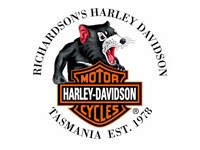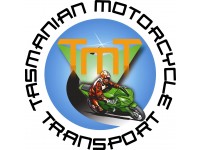Helmet Laws Australia
Australian Motorcycle Helmet Laws
The information provided here has been collected together to explain the system of regulation used in Australia in the simplest manner possible and to clear up many misconceptions which have built up over the years.
Many of the links are to overlay pages which give further information, particularly in the helmet history page
Every effort has been made to ensure the information is accurate and correct, if you consider there are errors then the sources of the information provided on the links page should be consulted to read the official Govt pages.
The regulation of the importation, sale and use of helmets is split across the Federal and State Governments.
The intent of the regulations is to ensure that what is legal to sell is legal to use in every State and Territory.
The Federal Government regulates the importation of helmets via the Customs Act and the sale of helmets via the Australian Consumer Law (ACL) which is the new name of the Trade Practices Act 1974 (TPA). Under ACL the State Fair Trading Departments no longer need to gazette separate definitions of what constitutes an "approved" helmet.
Australian Consumer Law is administered by the ACCC. See www.consumerlaw.gov.au for details.
The ACCC conducts random testing of helmets to ensure helmets offered for sale meet the mandated safety standard.
The Federal Government develops the Australian Road Rules which the States then implement in whole or in part into the State Road Rules Acts. The Road Rules Acts provide for regulations to be formulated by the State Road Transport Authorities. The standards for the use of helmets on public roads is set via these regulations.
The States have been updating their road transport acts to unify the State laws with the Australian Road Rules over the last few years. The introduction of the ACL should have meant the State Road Rules referenced the Commonwealth definition of an "approved helmet". This has not occurred, see the page for your State to look at the regulations.
There are a number of forms of certification used for products ranging from self certification by manufacturers to full conformance testing to a standard.
The testing of helmets to confirm compliance to the standard specified on the labels is only required under some State Regulations. See the State and Federal Govt sections for the helmet certification systems used for helmets.
The intent of the 1990's changes to Federal regulation of helmets was to move to self certification by manufacturers.
The State Regulations mean full certification is still being done in addition to the ACCC random testing.
The motorcycling motorsport bodies largely refer to Motorcycling Australia regulations for helmet standards. These are set in the Manual of Motorsport (MOMS) Appendix 1. The Australian National Drag Racing Association (ANDRA) is an exception and formulate their own regulations in part due to different fire rating requirements.
Helmet standards for car racing are set by the Confederation of Australian Motorsport (CAMS). There are 4 competition grades (A, B, C, D). Motorcycle helmets to AS1698, UNECE E22, BSI and Snell are allowed in grades B and C.
Tasmania Motorcycle Helmet Rules and Regulations
The principal Act is the Vehicle and Traffic Act 1999. It replaced the Road Traffic Act 1925.
The subordinate Act with the Road Rules is the Traffic (Road Rules) Regulations 2019.
Helmet Regulation definitions are written directly in Rule 270
The regulations are formulated and gazetted periodically and plain english versions included in the rider handbook.
The rider of a motor bike that is moving, or is stationary but not parked, must:
(a) wear an approved motor bike helmet securely fitted and fastened on the rider's head; and
(b) not ride with a passenger unless the passenger complies with sub rule (2).
Penalty: Fine not exceeding 5 penalty units.
Note: Motor bike and park are defined in the dictionary.
However, the rider of a motor bike that is moving, or is stationary but not parked, is exempt from wearing an approved motor bike helmet if:
(a) the motor bike's engine is not on, and
(b) the rider is pushing the motor bike, and
(c) in the circumstances, it is safe for the rider not to wear the helmet.
A passenger on a motor bike that is moving, or is stationary but not parked, must wear an approved motor bike helmet securely fitted and fastened on the passenger's head.
Penalty: Fine not exceeding 5 penalty units.
In this rule--
approved motor bike helmet means a helmet--
(i) AS 1698; or
(ii) AS/NZ 1698; or
(iii) the United Nations Economic Commission for Europe standard 22.05; and
1 A helmet that is scratched or marked but the scratch or mark has not:
(a) penetrated the helmet's outer shell; or
(b) damaged the helmet's retention system; or
(c) damaged the helmet's inner lining.
2 A helmet that is damaged to a degree that might reasonably be expected from the normal use of the helmet.
3 A helmet that has a device affixed to it that --
(a) the helmet's manufacturer has recommended may be affixed to the helmet; and
(b) is securely affixed to the helmet in the way intended by the helmet's manufacturer.
The Transport Commission, having regard to such considerations as it thinks fit, may issue a person with -
(a) an exemption permit authorising the person to drive or park a vehicle otherwise than in accordance with
a parking control sign; or
(b) an exemption certificate exempting the person from having to comply with a provision of the Road Rules.
Latest News
Archives
- December 2025 (1)
- September 2025 (1)
- July 2025 (1)
- May 2025 (2)
- August 2024 (1)
- November 2023 (1)
- September 2023 (1)
- August 2023 (1)
- September 2022 (1)
- August 2022 (3)



